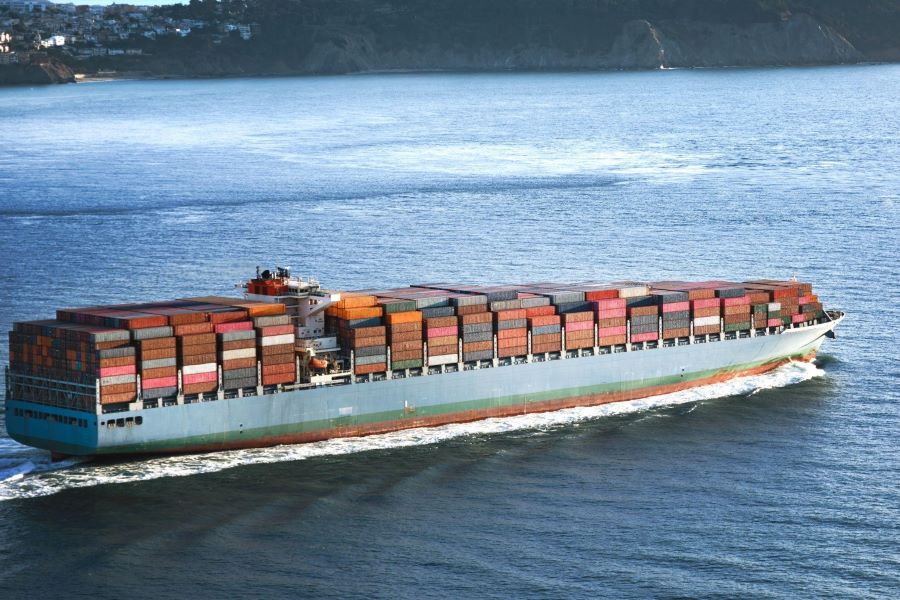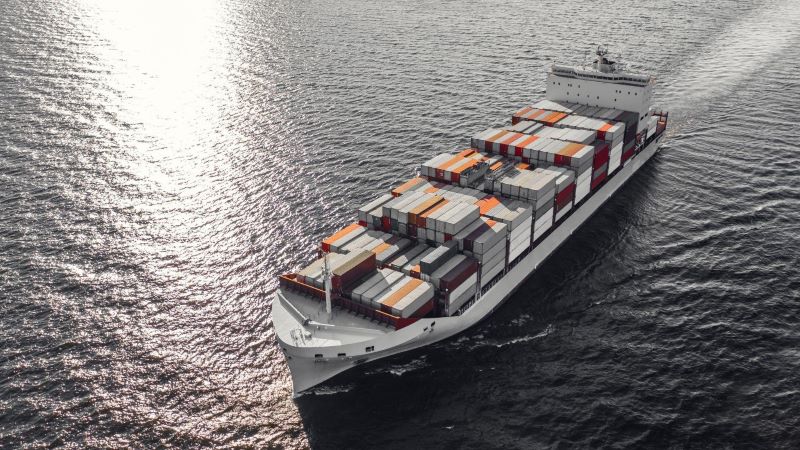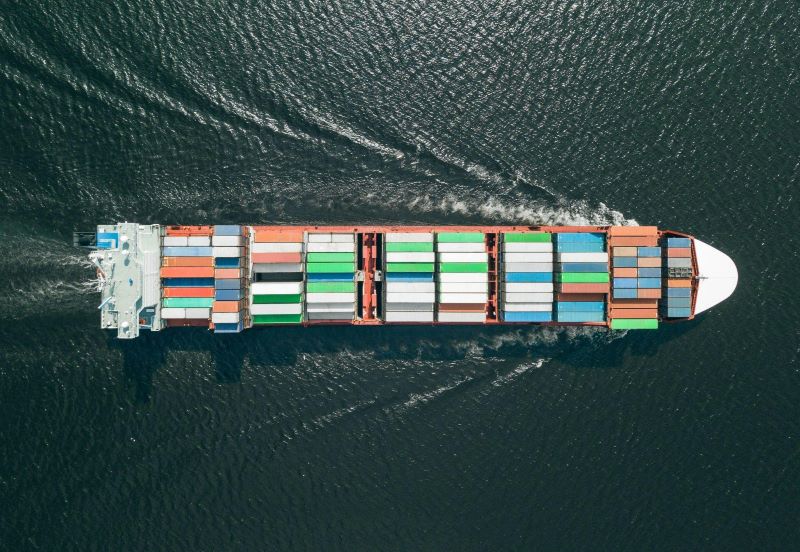
In our interconnected world, the things we buy often go through quite a process before ending up in our hands. Have you ever wondered how items like electronics, clothes, and food travel such long distances? This is where container ships come into play.
They are giant floating warehouses that carry metal containers filled with all sorts of goods. Sounds fascinating right? In this article, we will dive into how these huge ships and the well-planned logistics work together to ensure things get delivered precisely where they need to be.
Ready to learn more? Let’s dive right in!
What Are Container Ships?

Container ships, also known as container vessels or cargo ships, are specialized sea-faring vessels designed to transport standardized containers filled with goods across oceans and seas. These ships play a pivotal role in global trade by efficiently moving large cargo volumes between countries and continents. Various types of container ships exist, but they all share the common characteristic of being optimized for carrying containers.
Container Ship Classes
Container ships are usually classified based on their TEU (Twenty-foot Equivalent Unit) capacity. This refers to the number of standard 20-foot shipping containers a ship can carry.
Here are some standard container ship classes:
- Small Feeder Vessels: These are the smallest container ships, typically with a capacity of around 1,000 TEUs. They are used to transport containers between smaller ports and larger hubs.
- Feeder Vessels: Feeder vessels are larger than small feeders but smaller than main-line container ships. They usually have a capacity of around 1,000 to 3,000 TEUs and serve to distribute containers between regional ports and larger hub ports.
- Panamax: The term “Panamax” refers to ships designed to fit through the Panama Canal’s original locks, which have size limitations. Panamax container ships typically have a capacity of around 3,000 to 5,000 TEUs.
- Post-Panamax: These are larger than Panamax ships and cannot fit through the original Panama Canal locks. They usually have a capacity of around 5,000 to 14,000 TEUs. Post-Panamax ships take advantage of the expanded Panama Canal with its larger locks.
- New Panamax or Neo-Panamax: These ships can fit through the new, larger locks of the expanded Panama Canal. They have a capacity of around 13,000 to 14,000 TEUs.
- Malaccamax: These ships can fit through the Strait of Malacca, a narrow passage between the Indian and Pacific oceans. The size limitations of the strait constrain these ships, and they typically have capacities of around 14,000 to 18,000 TEUs.
- Ultra Large Container Vessels (ULCVs): These are some of the largest container ships in operation, with capacities exceeding 14,000 TEUs and going up to 24,000 TEUs or more. They serve long-haul routes between major global ports.
- Megamax or Megaships: This term is sometimes used interchangeably with ULCVs. Megamax ships are the largest container vessels, often exceeding 20,000 TEUs and pushing towards 24,000 TEUs.
From Creation to Port: The Journey of a Container Ship

Let’s uncover the complex process that supports modern international trade, from the origin to the destination!
Construction of a Container Ship
Building a vessel of such magnitude and weight is usually carried out in segments, each piece created within an enclosed space. Most construction is conducted within a dry dock, using specialized heavy cranes for lifting. As each element is positioned, they get fused by welding to form a whole unit.
While the deck of a cargo ship may seem flat, it is composed of numerous cargo compartments that are hundreds of feet deep. This is where most cargo containers are stored during travel, but several thousand will still be positioned above the deck line. The tower and crew quarters are next when the main body is done. Following that, the ship’s machinery gets installed.
This includes the engines, propellers, rotor, steering mechanism, and other mechanical and electrical systems. The final phase consists of setting up the crew quarters and installing other interior features.
Quality Assurance in Container Ship Construction
Shipping companies ensure these ships function as planned by subjecting each new vessel to a series of tests, commonly known as sea trials. Throughout this process, the ship undergoes various tests and drills to confirm it’s fit for sailing and ready for operation.
Over several weeks, the team and engineers scrutinized the ship’s propulsion and steering systems, navigational tools, and safety features. To verify their correct operation, the ship’s engines are tested at varying speeds and under multiple loads.
Simultaneously, the steering systems are examined to guarantee the ship can maneuver safely. Once the sea trials are concluded and appropriate modifications have been made, the vessel is handed over to the purchaser and is ready to commence its service.
Port Infrastructure and Container Handling Process
Globally, port infrastructure has been put in place to facilitate the operation of container ships. This includes the installation of large-scale heavy-duty cranes and extensive port facilities for storing, cataloging, and dispatching unloaded containers, typically via trains or trucks.
The container loading process is a pivotal part of any shipment. It is carried out using various types of equipment, especially cranes, which help position the containers while ship personnel secures them. All containers come with corner locking mechanisms, allowing the first container to be secured in its slot, and each following container is linked to the one below it.
Once a stack is finished, it is further stabilized with lashing tools like chains, cables, and turnbuckles. The ship’s crew also oversees the weight and distribution of containers throughout the process to ensure the vessel maintains its balance.
When the ship reaches its destination, it is docked, and the cranes start unloading the containers. Since the largest ships can transport over 20000 containers, this process can last up to three days. After that, the containers continue the journey to their final destination, usually via trucks or trains.
Critical Advantages of Container Shipping
Shipping goods in large containers has made global trade much more accessible. It’s helped connect the world’s economies and given consumers access to various products. Here are the key benefits of container shipping:
- Efficiency: Containerization reduces the need to manually handle individual items, speeding up loading and unloading processes.
- Standardization: Containers are uniform in size, making them easily transferable between different modes of transportation and ensuring compatibility across the supply chain.
- Security: Containers are sealed, protecting goods from theft and damage during transit.
- Intermodal Transportation: Containers transition between ships, trucks, and trains, enabling efficient door-to-door transportation.
- Economies of Scale: Large container ships can carry vast cargo, saving shippers and consumers cost.
Conclusion
And there you have it! We hope this article helped you understand the complex and fascinating world of container ships. As you can see, the interplay between ship design, construction, port infrastructure, and standardized procedures works together like a well-rehearsed orchestra.
This ensures everything runs smoothly as goods sail across the seas, connecting our world in ways we often don’t even realize. So next time you order a product from another part of the world, remember the intricate dance of container ships that made it possible for you to receive it!
Read Also:
- How Much Do I Need To Invest To Start Drop Shipping?
- A Comprehensive Guide To Understanding Expedited Shipping
- Avoiding Common Pitfalls In Amazon To Ebay Dropshipping: Tips For Success





